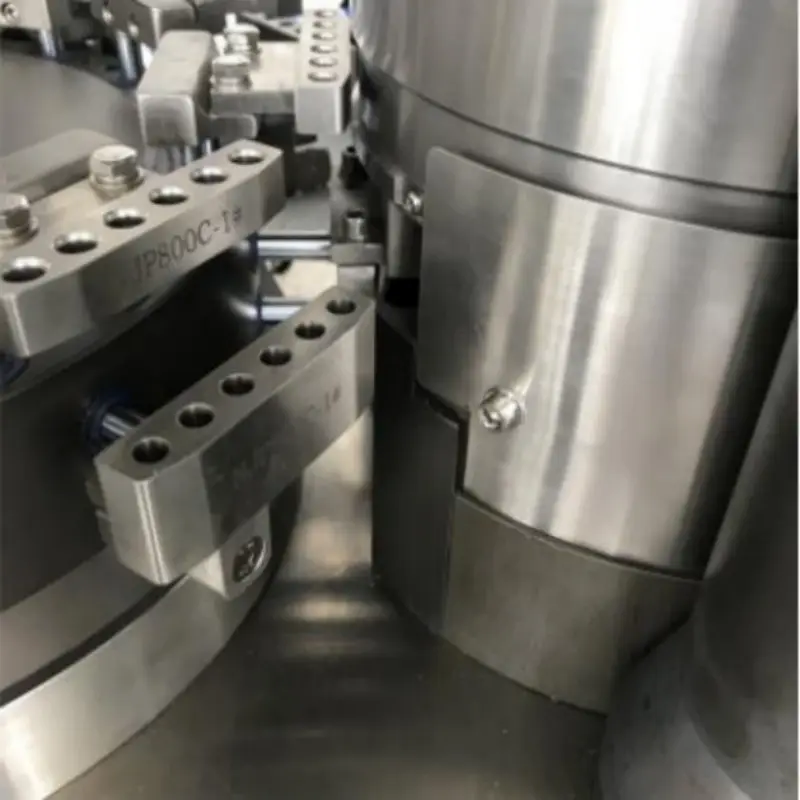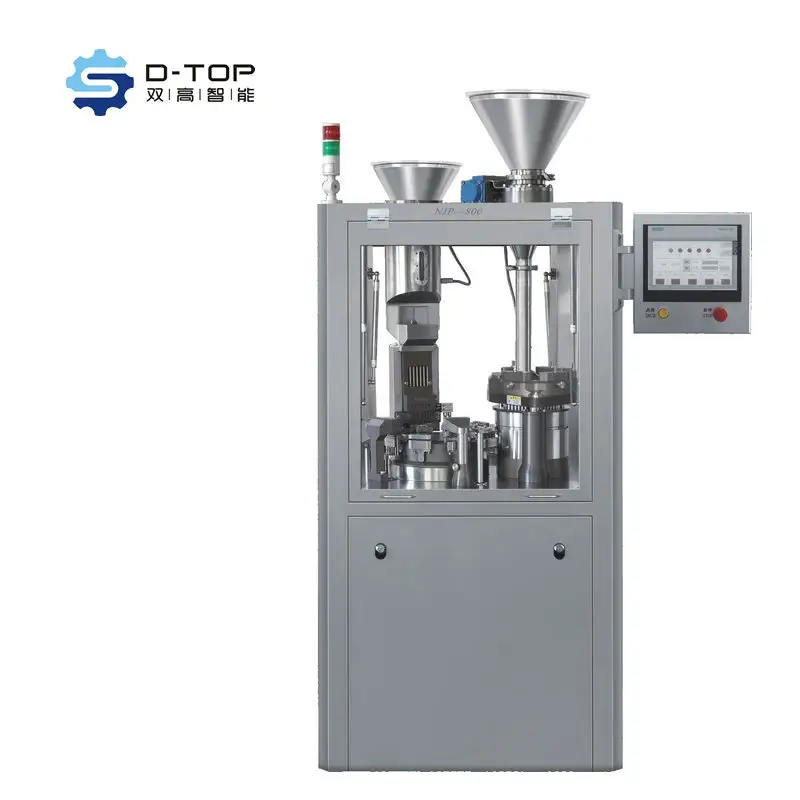Role of Capsule Filling Machines in Pharmaceutical Manufacturing
A Capsule Filling Machine is a core piece of equipment in pharmaceutical manufacturing that automates the process of placing powdered, granular, or pelletized formulations into empty capsules. This machine dramatically increases production speed, improves dose accuracy, and reduces human exposure to active pharmaceutical ingredients. In modern facilities, a Capsule Filling Machine supports quality control, traceability, and GMP compliance by integrating with inspection systems and electronic batch records.
Core Functions of a Capsule Filling Machine
Dosage Accuracy and Consistency
A primary function of a Capsule Filling Machine is to provide precise dosing. By using calibrated dosing systems—such as tamping, dosator, or vacuum mechanisms—the machine ensures each capsule contains the required amount of active ingredient and excipients. Maintaining consistent fill weight across thousands of units minimizes batch-to-batch variability and helps meet strict regulatory limits on potency and uniformity.
High Throughput and Production Efficiency
Pharmaceutical manufacturers rely on Capsule Filling Machine models capable of producing tens of thousands of capsules per hour. High-speed rotary fillers and modular continuous systems allow companies to scale production without sacrificing quality. Faster production lowers per-unit costs and enables manufacturers to meet market demand or seasonal spikes more effectively.
Types and Technologies of Capsule Filling Machines
Manual, Semi-Automatic, and Fully Automatic Systems
Capsule Filling Machine options range from manual benchtop units for small-batch compounding to semi-automatic systems for medium-scale production and fully automatic rotary machines for large volumes. Manual and semi-automatic Capsule Filling Machine types are useful for R&D, clinical trials, and niche products, while fully automatic systems are designed for validated commercial manufacturing under GMP.
Capsule Types and Material Compatibility
Different Capsule Filling Machine designs accommodate hard gelatin, hydroxypropyl methylcellulose (HPMC), and other specialty capsule shells. Material compatibility is important because some active ingredients react with gelatin or require moisture-controlled environments. Choosing a Capsule Filling Machine that supports the capsule type, size, and environmental controls (e.g., dehumidification) is essential for product stability.

Integration with Manufacturing Lines
Automation and Upstream/Downstream Integration
A modern Capsule Filling Machine often integrates upstream with blenders and feeders and downstream with capsule polishing, inspection, and cartoning. Seamless integration reduces manual handling and contamination risks. Automated conveyors, reject systems, and vision inspection help ensure only correctly filled capsules proceed to packaging, improving overall line yield.
Data Capture and Compliance Features
Capsule Filling Machine models with digital controls capture critical parameters such as fill weight, RPM, and capsule quality metrics. Electronic logs simplify batch record creation and support regulatory audits. Integration with Manufacturing Execution Systems (MES) and SCADA enables remote monitoring and trend analysis, enhancing process control and continuous improvement efforts.
Quality Control and Validation
In-Process Inspection and Rejection
Quality is enforced at multiple points when a Capsule Filling Machine is in operation. In-process checks like weight sampling, automated metal detection, and visual inspection systems detect defects early. Rejection mechanisms remove defective capsules from the line, protecting patients and maintaining product integrity.
Validation, Cleaning, and Changeover
Validation protocols—IQ/OQ/PQ—are mandatory for pharmaceutical Capsule Filling Machine installations. These protocols verify that the equipment performs reliably under expected operating conditions. Additionally, design features that facilitate fast changeovers and thorough cleaning (CIP or GMP-compliant manual cleaning) reduce cross-contamination risks and support multi-product facilities.
Selection Criteria for a Capsule Filling Machine
Production Volume and Speed Requirements
When choosing a Capsule Filling Machine, define your current and projected output. Small manufacturers may prioritize flexibility over speed, while contract manufacturers and large pharmaceutical firms usually require high-capacity Capsule Filling Machine models. Consider expansion plans, SKU diversity, and potential contract commitments to find a machine that meets both present and future needs.
Product Characteristics and Environmental Controls
Product-specific factors—particle size, electrostatic properties, hygroscopicity, and particulate content—affect which Capsule Filling Machine technology is appropriate. Hygroscopic formulations often need humidity-controlled filling rooms or integrated dehumidifiers. For potent APIs, containment-ready Capsule Filling Machine options with negative-pressure enclosures and HEPA filtration protect operators and maintain a safe production environment.
Operational and Economic Considerations
Total Cost of Ownership
Beyond purchase price, evaluate the total cost of ownership for a Capsule Filling Machine, including installation, validation, spare parts, consumables, energy use, and maintenance. Higher initial investment in a robust machine may yield lower lifetime costs through reduced downtime and higher throughput. Analyze ROI scenarios based on production volume, labor savings, and regulatory compliance benefits.
Service, Training, and Spare Parts
Reliable after-sales support is crucial. Choose Capsule Filling Machine suppliers with a track record of responsive service, local technicians, adequate spare parts inventory, and operator training programs. Comprehensive training reduces operator errors and helps maintain consistent performance across campaigns.
Practical Tips for Implementation
Pilot Trials and Process Optimization
Before full-scale deployment, run pilot trials on the Capsule Filling Machine using production formulations and capsule sizes. Pilot data reveal challenges such as segregation, dusting, or inconsistent flow that lab-scale tests might miss. Use trial outcomes to optimize feeder settings, tamping force, and dosing methods.
SOPs and Continuous Improvement
Develop standard operating procedures for setup, cleaning, maintenance, and troubleshooting of the Capsule Filling Machine. Implement continuous improvement cycles by tracking yield, downtime, and defect rates; then adjust process parameters and maintenance schedules to improve performance over time.
FAQ
What kinds of products are best suited for a Capsule Filling Machine?
A Capsule Filling Machine is best for powdered and granular APIs, dietary supplements, vitamins, and multi-component blends that require accurate dosing and high-volume packaging.
How do I ensure the Capsule Filling Machine meets GMP requirements?
Validate the machine with IQ/OQ/PQ protocols, maintain thorough cleaning records, use calibrated scales and measuring devices, and integrate electronic batch records and audit trails for compliance.
Can a Capsule Filling Machine handle different capsule sizes and types?
Yes, many modern Capsule Filling Machine models support various capsule sizes and shell materials. Quick-change tooling and adjustable dosing systems make switching sizes faster and easier.
What containment options are available for potent drugs on Capsule Filling Machines?
Containment-ready Capsule Filling Machine configurations include enclosed work zones, local exhaust ventilation, negative pressure hoods, and HEPA filtration. Select a system based on the occupational exposure limits of your API and regulatory expectations.
Table of Contents
- Role of Capsule Filling Machines in Pharmaceutical Manufacturing
- Core Functions of a Capsule Filling Machine
- Types and Technologies of Capsule Filling Machines
- Integration with Manufacturing Lines
- Quality Control and Validation
- Selection Criteria for a Capsule Filling Machine
- Operational and Economic Considerations
- Practical Tips for Implementation
- FAQ

